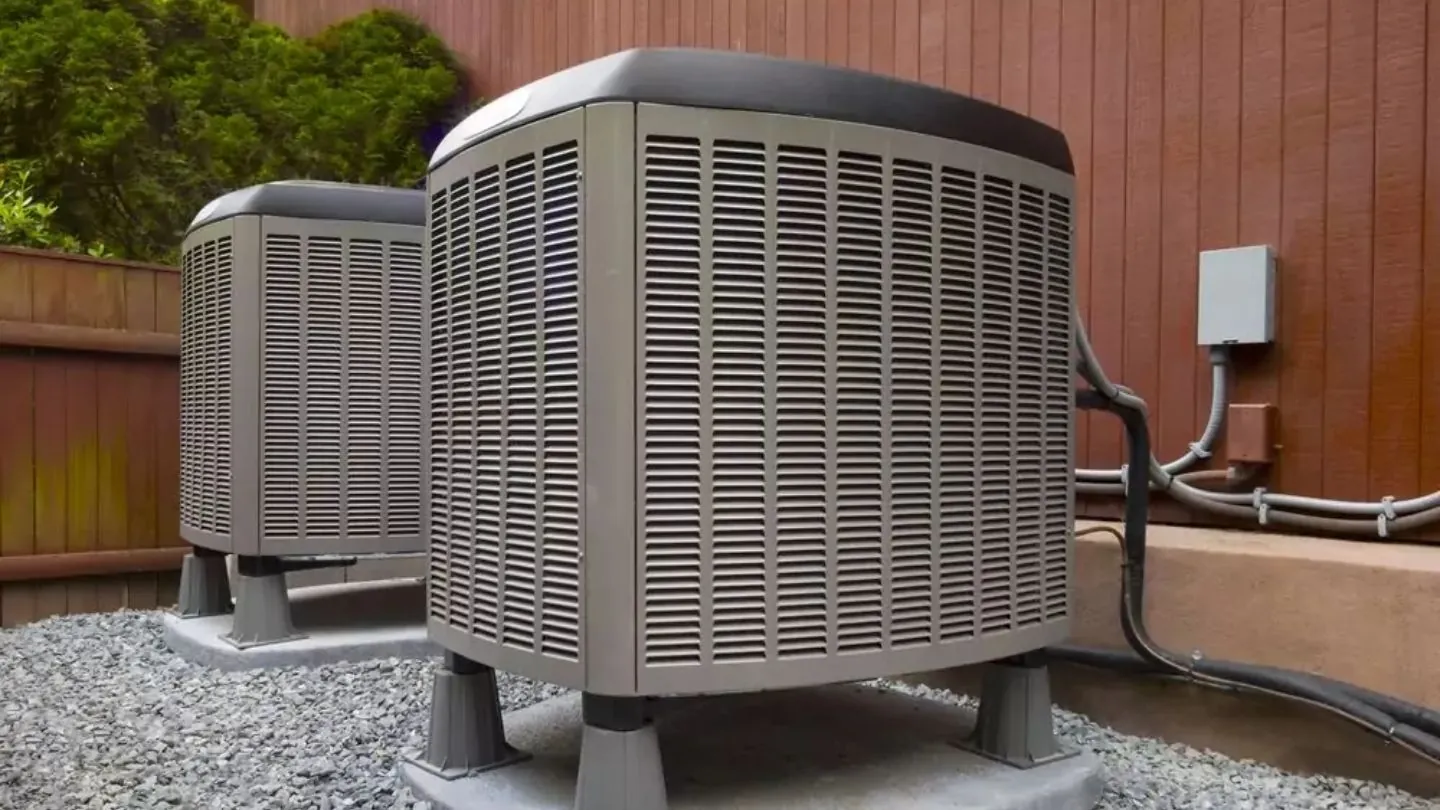How Long Can AC Run Continuously? Tips & Insights
In this blog, we’ll cover how factors like thermostat settings, insulation, and outdoor temperature affect continuous operation, including how long AC can run continuously. You’ll also learn typical run times, the impact on energy consumption, and practical maintenance tips to ensure your AC runs efficiently.
Key Takeaways
- AC run time is influenced by thermostat settings, outdoor temperatures, humidity, home insulation, and unit size.
- Continuous operation increases energy consumption, leading to higher bills and greater wear and tear on the system, potentially requiring more frequent repairs.
- Regular maintenance, effective insulation, and programmable thermostats can optimize AC efficiency and prolong the system’s lifespan while reducing continuous operation.
Factors Influencing Run Time
Several factors impact the sustained functioning of an AC unit. The thermostat settings are a crucial determinant. Setting it excessively low forces the unit to exert more effort for prolonged periods. Room temperature and external heat ingress also play major roles. Elevated outdoor temperatures paired with humidity levels can necessitate extended operation of the AC to achieve desired comfort levels.
The effectiveness of home insulation is equally important. Quality insulation maintains consistent indoor temperatures by keeping cool air in, preventing hot air from coming through, and warding off cold drafts that could penetrate inside. In contrast, inadequate insulation demands extra work from the AC as it labors to equalize internal temperatures.
Lastly, ensuring that your AC unit’s size matches your home space is vital for efficient operation. An undersized unit will need continuous running time when attempting to cool down a larger area. Choosing one that fits correctly will enable effective cooling without unnecessary strain on the system.
Typical AC Run Times
Under normal circumstances, the duration for which an AC unit operates each day can vary considerably based on elements like the external temperature and the insulation quality of a home. It is crucial to strike a balance between achieving comfort and maintaining efficiency, which means making sure that the air conditioning system functions within its ideal parameters. Normally, one cooling cycle should take about 15 to 20 minutes before there’s a pause in compressor activity.
Should there be insufficient insulation or exceedingly high temperatures outside, it might lead to longer periods of operation since the air conditioning has to work harder to keep up with the desired level of comfort inside. Recognizing these standard operating times enables homeowners to have appropriate expectations and identify any abnormalities if their AC runs for unusually long stretches.
Optimal Cooling Cycles
To achieve peak efficiency, it is best for cooling cycles to have a duration ranging from 15 to 20 minutes. This ensures that the unit attains the desired temperature without being excessively taxed. Keeping the thermostat set within a range of 72°F to 78°F can both preserve comfort and promote efficient performance.
Under ideal circumstances, the condenser should complete roughly two full cycles each hour – though this may increase up to three during periods of elevated temperatures. These regulated cycles curb continuous running, which diminishes wear and tear on the system and contributes to lower energy expenses. Sustaining these cycle patterns guarantees stable indoor climate control while avoiding an undue burden on the cooling unit.
Extended Operation Scenarios
In extreme heat or high humidity, air conditioner run units may run longer to maintain comfort. On particularly hot days, the AC might operate longer than usual, increasing the strain on the system. This is especially common in areas with extreme heat.
When outdoor temperatures rise significantly, the compressor works harder to achieve the desired indoor temperature, leading to longer run times. Monitoring the system for signs of overworking is essential to prevent increased wear and tear and higher energy consumption.
Continuous Operation of Air Conditioners

Modern AC units are designed to manage persistent use and can operate for extended periods, potentially over 24 hours, depending on the circumstances and the particular model. Nevertheless, it’s advisable to allow periodic downtime for the system to prevent possible issues. If an air conditioner is made to run continuously without supervision, complications could arise.
While the continuous operation of an air conditioning unit ensures a steady indoor temperature, it also results in heightened energy usage and, subsequently, higher electricity costs. Allowing your AC unit to run incessantly may accelerate wear and tear on its parts, which might precipitate premature malfunctions and necessitate frequent repairs.
Impact on Energy Consumption
Continually operating air conditioning units leads to substantial increases in energy usage, which in turn causes electricity expenses to surge as the equipment perpetually consumes power to sustain the set temperature. Smart planning and timing of operations can counterbalance these expenditures, enhancing overall energy efficiency.
Employing a programmable thermostat enables residents to establish distinct cooling timetables that decrease reliance on unceasing AC activity and curtail unnecessary energy use. By fine-tuning the settings on their thermostats, individuals can strike an optimal balance between maintaining a comfortable environment and reducing costs.
Wear and Tear Considerations
An AC unit can incur substantial wear and tear from continuous use, which may lead to overheating and a reduction in efficiency that eventually requires frequent repairs. Without sufficient rest periods, the compressor is at risk of overstrain, resulting in significant mechanical problems.
If an AC system repeatedly cycles on and off, it accelerates the rate of wear and tear. To keep these concerns in check and maintain the AC unit’s peak performance while avoiding more extensive repair costs later on, regular maintenance is imperative.
Maintenance Needs
Ensuring that your AC undergoes regular maintenance is crucial for its sustained functionality. By arranging periodic inspections, one can guarantee the system’s effective performance and prolong its service life. Regular care involves the cleaning or replacement of filters to maintain excellent air circulation and effectiveness.
Expert servicing plays a pivotal role in recognizing small problems, such as obstructed filters or grimy coils, before they develop into significant issues, particularly due to the strains of persistent use.
Through consistent upkeep, potential complications are thwarted, facilitating efficient operation while preventing undue wear and tear on the system.
Common Reasons for Constant AC Operation

Understanding why an air conditioner might run continuously helps homeowners troubleshoot and improve efficiency. Poor home insulation allows cool air to escape and warm air to enter, forcing the AC to work harder. Leaking pipes or insulation can also lead to continuous operation due to the loss of cool air.
Another reason could be the need for repair. If the AC unit runs too frequently or for long periods, it may not be functioning properly and requires professional attention. Identifying these common causes helps maintain an efficient and well-functioning system.
Thermostat Issues
Regularly, problems with the thermostat lead to incessant operation of the air conditioning system. As it governs temperature control and dictates when cooling should cease, any incorrect settings or targets beyond reach may prompt relentless activity from the AC compressor.
A malfunctioning thermostat might cause continuous functioning despite achieving the desired indoor temperature. Ensuring correct thermostat calibration and routine upkeep is essential in averting these complications and maintaining an even indoor climate without placing undue strain on the AC unit.
Insufficient Cooling Capacity
A common cause of unending operation is an air conditioning unit that’s too small for its intended area. When the AC lacks sufficient capacity, it labors tirelessly to attain and maintain the indoor temperature set by the user, which can lead to continuous running. Ensuring a proper load calculation prior to installation is crucial in selecting an AC unit of suitable size.
Comprehension of your space’s cooling demands is key when picking out an air conditioner with adequate sizing. This foresight helps avoid overburdening the system and potential harm while promoting a steady indoor climate without unnecessary stress on the equipment.
Blocked Airflow
An air conditioner may be forced to operate nonstop if airflow is obstructed. Vents or ducts that are blocked require the AC unit to exert extra effort, which leads to it running incessantly. Air filters clogged with dirt restrict the flow of air, making the system work overtime trying to lower the indoor temperature.
Maintaining clean air filters and eliminating any obstructions in airflow can prevent such problems from arising. Adequate insulation coupled with clear vents enables an AC system to function effectively while preserving a cozy interior climate without undue stress on the unit.
Effects of Continuous AC Use

Consistently operating an AC unit can have substantial implications for both the equipment and the resident. Elevated energy use is a significant consequence, which in turn drives up electricity costs. Persistent high power usage heightens household expenditures, underscoring the importance of strategically controlling when the AC runs.
Continuous operation of an air conditioning system escalates wear and tear on its components, leading to not only frequent repairs but also diminishing its overall service life. Keeping an AC running without interruption may cause health-related issues like excessive dryness of air that results in discomfort or dehydration risks.
Increased Energy Bills
In hot weather, when the air conditioning must run continuously to preserve a comfortable indoor atmosphere, energy bills may soar due to elevated power usage. The incessant operation of an AC unit leads directly to inflated electricity costs that significantly impact monthly financial outlays.
If an AC is subject to repetitive cycles of powering on and off frequently, it can result in greater consumption of energy as well as higher operational expenses. By implementing efficient strategies for managing how long their AC runs and adopting practices geared towards saving energy, homeowners have the ability to lower their energy expenditures while still keeping their homes at a pleasant temperature.
Reduced System Lifespan
The lifespan of air conditioning systems is notably diminished by constant use. When these systems are operated without adequate periods of rest, their parts can overheat and wear out more rapidly, which leads to the need for frequent repairs. To prolong the life of an AC unit and stave off significant damage, it’s crucial to perform regular cleaning and maintenance.
Maintaining the efficient operation of your AC unit and keeping up with its care can help avert the risks associated with continuous operation, thereby extending its serviceable life.
Read more: Why Is My AC Blowing Hot Air: Top 4 Reasons & CausesHealth Concerns
Prolonged use of air conditioning can lead to certain health issues, including dry skin and dehydration. This is due to the reduced humidity levels that often accompany continuous AC usage, which increases the likelihood of becoming dehydrated. Prolonged exposure to conditioned air may result in itchy and dry skin.
To counteract these potential health effects, it’s important to keep an eye on indoor humidity while ensuring adequate hydration. Employing a humidifier during the long-term operation of your air conditioner can assist in preserving a healthy and pleasant atmosphere indoors.
Tips for Efficient AC Operation

To ensure the air conditioning (AC) system operates at peak efficiency and prevents it from running incessantly, activate the AC only when the temperature within your residence exceeds your preferred comfort threshold. Consider replacing your current unit with a more energy-efficient version to help diminish the likelihood of unrelenting operation.
Employ ceiling fans to distribute cool air throughout your space and draw blinds or curtains shut to keep out solar heat. These measures will lighten your AC’s burden. Adhering to guidelines suggested by professionals can enhance functionality while also contributing to energy savings.
Upgrade to a Programmable Thermostat
Switching to a programmable thermostat enhances energy efficiency by facilitating the creation of customized schedules for heating and cooling. By sustaining stable temperature settings, these thermostats aid in achieving both comfort and reductions in energy consumption.
By configuring distinct times for heating and cooling using a programmable thermostat, individuals can fine-tune their home’s climate according to their own routines, improving comfort levels. This approach reduces the duration that an AC runs and helps to avoid excessive cooling, resulting in lower energy expenses.
Read more: How To Choose A Thermostat For Your Home?Improve Home Insulation
Improving the insulation in your home is crucial for lessening the strain on your air conditioning system. By inhibiting the transfer of heat, proper insulation enables a consistent indoor temperature, enhancing the efficiency with which the air conditioning operates. Insulation in attics is especially vital as it blocks warm air from seeping into living areas, reducing what is known as the cooling load on AC units.
By sealing off any cracks and openings near windows and doors, you can significantly bolster your home’s insulation. This action helps to retain cool air inside and prevent hot air from entering. Adopting double-pane windows along with well-insulated ductwork aids in decreasing heat exchange while preserving conditioned indoor temperatures – these steps contribute substantially to optimizing performance within HVAC systems.
Schedule Regular Maintenance
It’s essential to arrange for periodic inspections and upkeep of your air conditioning system to guarantee it functions at its best. These regular checks serve to spot potential problems early on, thus preventing them from escalating into expensive repairs or the need for the AC unit to run continuously. A key element in maintaining high performance is routinely replacing air filters, which supports ideal airflow and operational efficiency.
With consistent maintenance, you can ensure that your AC doesn’t have to operate non-stop, diminishing wear and tear while prolonging the life of the system. Adopting this preventative stance minimizes the likelihood of frequent repairs and assures that your air conditioning will perform reliably during times when demand is highest.
Read more: Top 9 Benefits of Ac Maintenance For Your HomeSummary
Grasping the duration for which air conditioning systems can operate continuously and what influences this is key to ensuring comfort, operational efficiency, and extending the lifespan of your system. Various factors affect how long an AC should run. These include thermostat settings as well as insulation levels in your home. Normally, cooling cycles are expected to last around 15 to 20 minutes under standard conditions. Intense weather might require longer periods of operation.
Running your air conditioning non-stop may occasionally be necessary, but it often results in a spike in energy consumption, leading to inflated bills along with expedited wear and tear on the unit itself. Implementing regular maintenance routines for AC unit size optimization, along with resolving common problems such as faulty thermostats or obstructed airflow, can help curb these downsides. Adhering strictly to recommended practices for efficient use will enable homeowners to relish a consistently comfortable indoor climate while minimizing undue stress on their units.
If you’re looking for professional assistance with heating or cooling services, our expert support is available in Boca Grande, Venice, Rotonda, Punta Gorda, North Port, Manasota, El Jobean, Burnt Store, and the surrounding areas. For reliable service, including air conditioner repair in Venice, turn to the experienced team at Total Comfort Cooling & Heating Inc.
Frequently Asked Questions
How can I reduce my energy bills with continuous AC use?
To effectively reduce your energy bills while using your AC continuously, upgrading to a programmable thermostat and improving your home’s insulation are essential. Additionally, regular maintenance of your AC system will help optimize its efficiency and lower overall energy costs.
How often should I schedule maintenance for my AC unit?
It is crucial to arrange for your AC unit’s maintenance during both the spring and fall seasons every year to ensure it operates at peak efficiency and avert possible problems. Regular maintenance can significantly prolong the durability of your system.
What are the health concerns associated with continuous AC use?
Continuous AC use can cause dehydration and dry skin from low humidity levels. To alleviate these issues, it’s important to monitor indoor humidity and maintain proper hydration.
How can I improve the efficiency of my air conditioning system?
Boosting the performance of your AC unit can be achieved by adopting a programmable thermostat, bettering household insulation, making use of ceiling fans, and committing to regular maintenance for your air conditioning system.
READY FOR YOUR NEXT HEATING OR COOLING PROJECT?
Contact us to get a quote and see why our customer service is recognized as the best in the industry.







 Special Offer: 12 Months - No Interest, No Payments!
Special Offer: 12 Months - No Interest, No Payments!